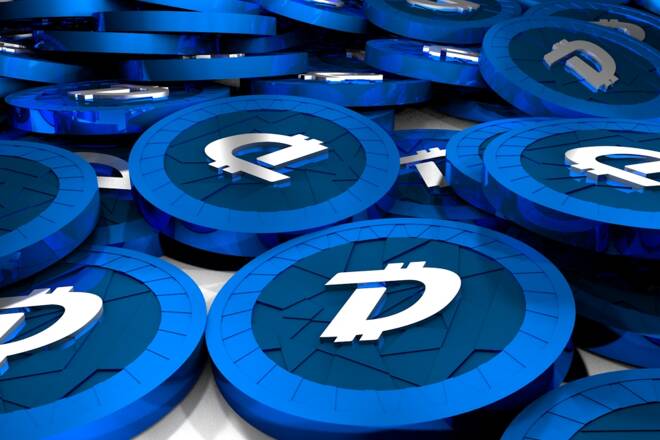Advertisement
Advertisement
DigiByte – 5 Cents Target. When?
By:
Since its price stabilization in April, DigiByte past performance shows a month of gains followed by 2 months of losses. There is no other evidence nor
Since its price stabilization in April, DigiByte past performance shows a month of gains followed by 2 months of losses. There is no other evidence nor any kind of clue whether October will be another green month that will continue to produce the same market price pattern or not.
With a lack of Intel, the only reasonable trading factor concerns the reward to risk ratio addressing the overall DigiByte market price picture.
The market price is moving roughly between 0.015 and 0.05. A hypothetic buy at the current market price around 0.025 with exits at 0.015 with a loss and 0.05 with profit presents 2.5 to 1 ratio. It allows an exit with 50% of the position with 25% return on the invested amount and remains with another 50% of the initial investment for a long-term investment strategy.
What is the Reward to Risk Ratio?
The reward to risk ratio measures the expected amount of profits on a given investment and the potential risk of a loss. Professional investors tend to buy an asset that has an opportunity of a potential positive ratio trading plan. It is used to statistically increase the probability of success.
What is DigiByte?
DigiByte is a decentralized blockchain which utilizes five cryptographic algorithms and is globally widespread. Every 15 seconds a new block is mined. In terms of scalability, it can perform 560 transactions per second. The transactions are fast and efficient, as they are limited in size and scope.
Up until now, more than 12 million transactions have been completed, above 6 million blocks were mined and almost 200,000 downloads of its core application were made.
*Any views and opinions presented in this section only reflect the author’s private opinion and should not be considered as guidance for trading.
This article was written by Yaron Mazor, a senior analyst at DX.Exchange
About the Author
Yaron Mazorcontributor
Yaron has been involved with the capital markets since 1998. During the past 16 years, Yaron has been a day and swing stocks trader in the American market. Yaron has founded and made successful investments into businesses spanning exciting industries – from apparel to restaurants and bars, to high tech, medical technology, and education.
Did you find this article useful?
Latest news and analysis
Advertisement
